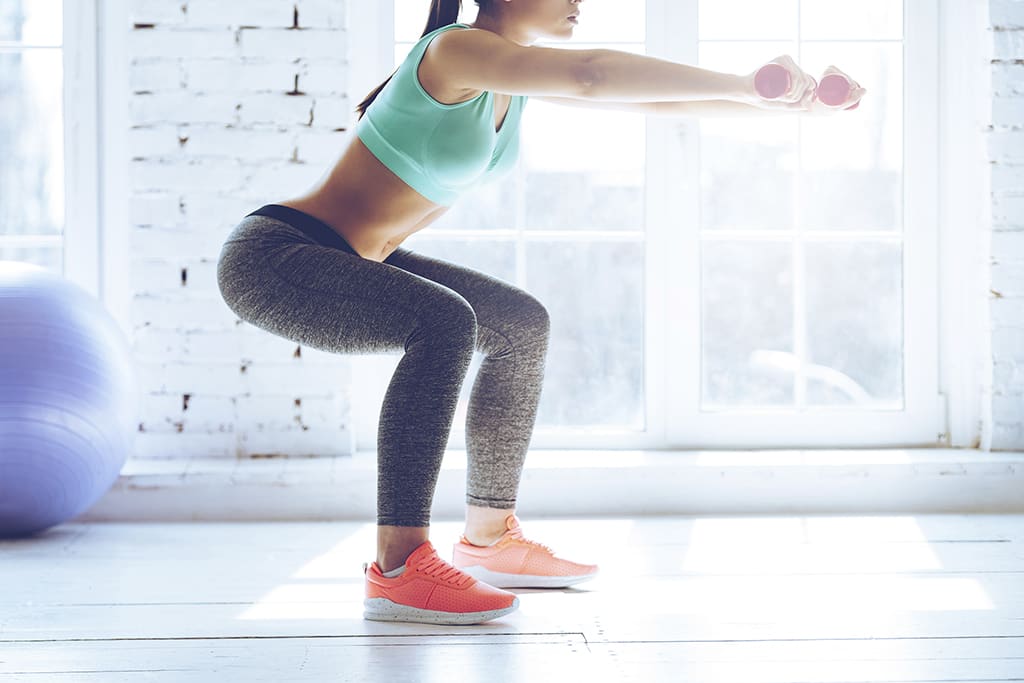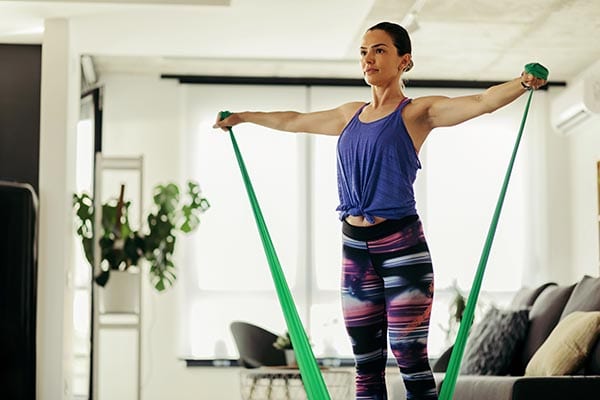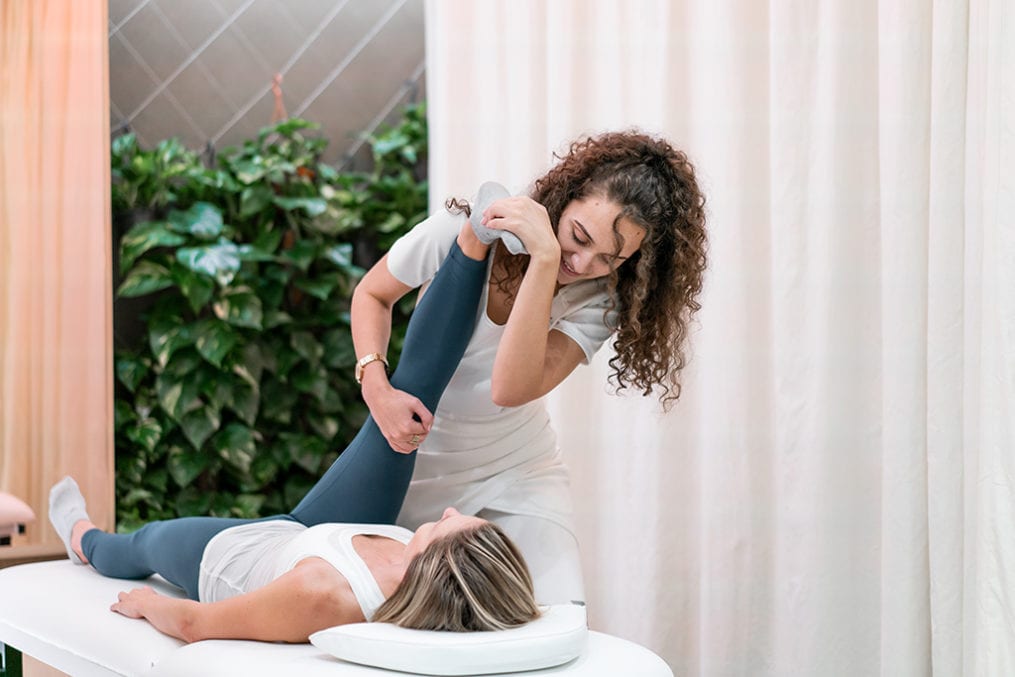Master the move: squat

We tend to think of a squat as a move that tones our legs and bums, but it does so much more! ‘Done with proper form, a squat works every muscle in your legs: quads, hamstrings, glutes and calves, but it also forces you to engage your core, abs and back muscles to stabilise,’ says personal trainer Vicky Gardner.
‘That means as well as the big muscles, it hits smaller ones, which helps reduce injury risk, strengthening ankles and hips. It’s also intense enough to elevate your heart rate and help you burn calories.’
5 steps to master a squat:
1
Stand with your feet shoulder- width apart, looking straight ahead, hips forward.
2 Squeeze your glutes, keep your chest up and back straight. Putting the weight back on your heels bend your knees, like you are sitting into a chair.
3 Keep your knees tracking in line with your feet, until your thighs are parallel to the floor.
4
Engaging your core, push up through your heels to a standing position. Look forward throughout in order to help maintain your back’s natural arch.
5 Return to standing by pushing through your heels, squeezing your glutes and locking your hips out.
Improve your form:
Office job? ‘Do some foam rolling before you squat – sitting at a desk 9 to 5 can mean you stay hinged at the hips for hours, shortening your squatting muscles.’
Protect your back ‘Put your hands on the back of your head, with elbows pinned back. This helps stop you leaning forward, which can put strain on your lower back and knees.’
Don’t buckle ‘Tie a resistance band around your knees and keep them pushed out, not inwards.’
Add challenge ‘Hold a kettlebell while you squat, take a wider stance, or do pop squats, where you jump from feet together to a wider stance and then squat deeply.’
Read more: Master the move: downward dog











